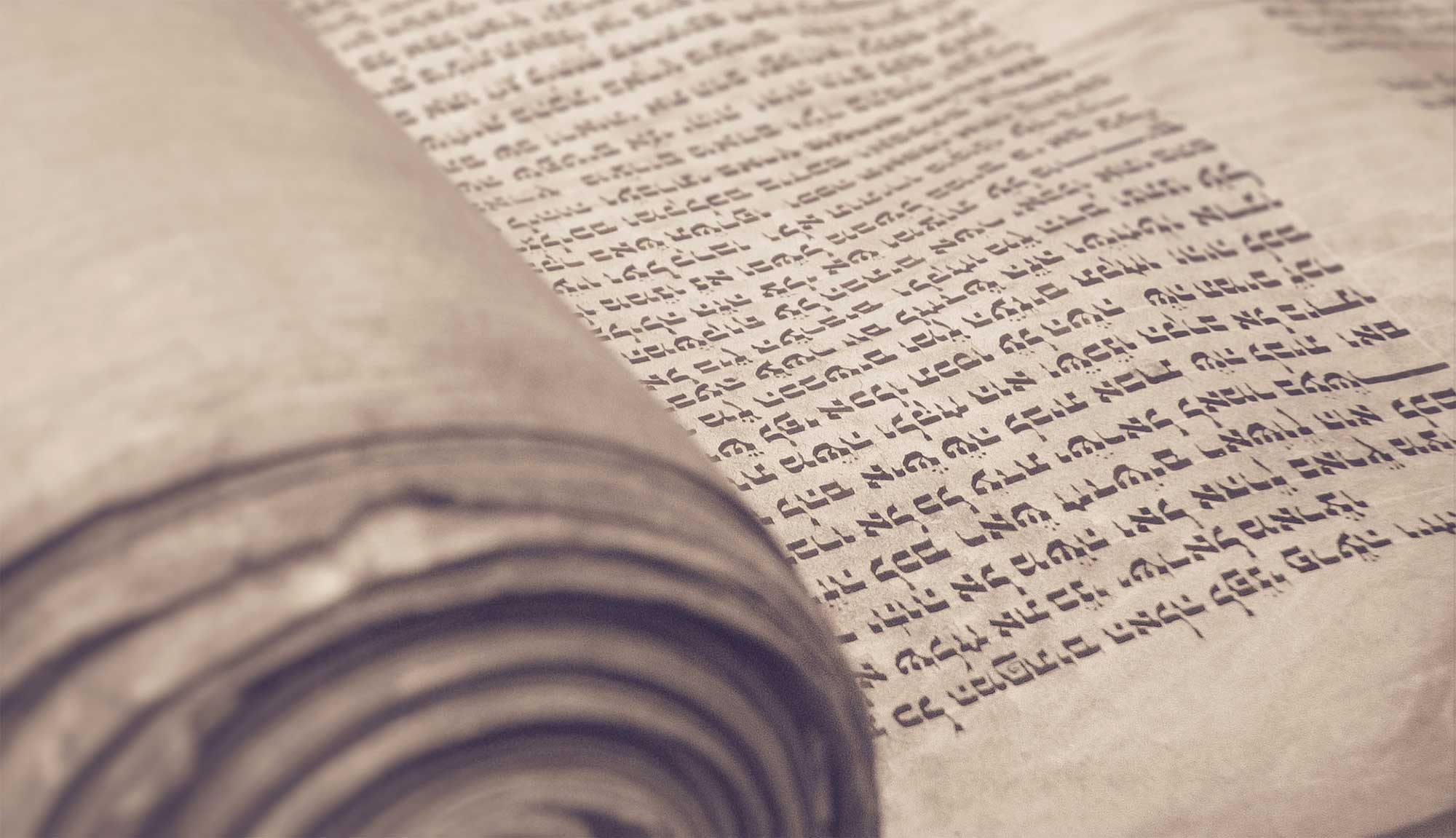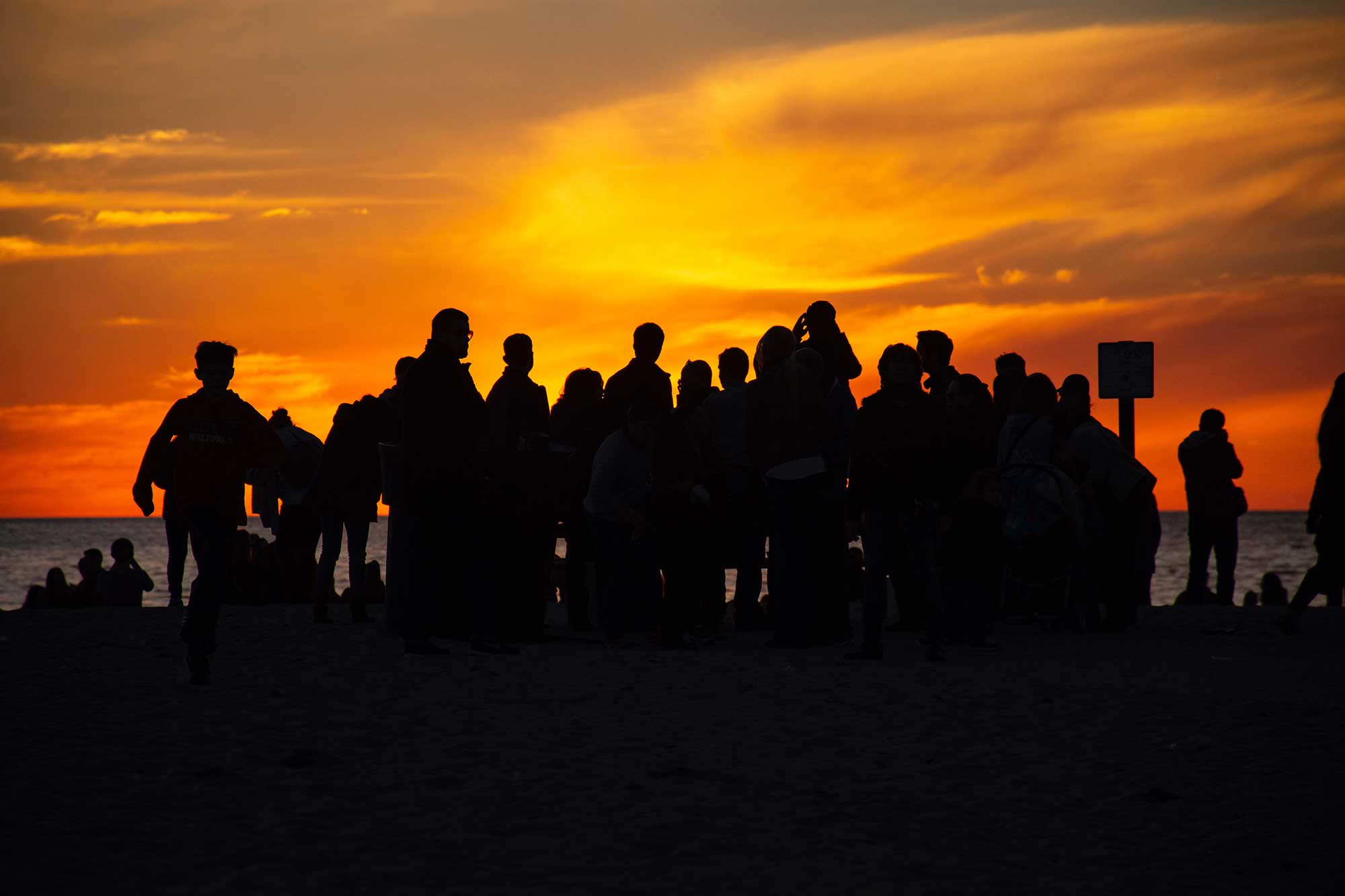
Revelation Hope –The Four Horsemen of the Apocalypse
Old Testament Imagery in Revelation
Revelation uses Old Testament imagery of Israel’s experiences to express the experiences of the Christian church, or true followers of Jesus.
When we looked at the church in Thyatira in Session 4
(see Revelation 2:18-29), we also looked at the relationship God has with His people through a covenant.
The idea of a covenant being made between God and His people is an important concept in understanding Revelation.
When God called Israel out of Egypt, He gathered the people at Mount Sinai to make His covenant with them (see Exodus 19:5,6).
God said if they obeyed Him, He would recognise them as a kingdom of priests and a holy nation.
Unfortunately, Israel was not faithful to God and repeatedly broke the covenant.
Jesus himself has become the faithful covenant partner that the Old Testament Israel never was. The very definition of Israel is expanded to include all who follow Jesus.
Now all who Trust in Jesus are Included in the Covenant
We have seen how God’s people are those who trust in Jesus (Galatians 3:26-29). The covenant now includes people from all races who are true followers of Jesus.
The New Testament teaches us that all who trust in Jesus are considered to be spiritual Jews (see Romans 2:28, 29). Both Jews and gentiles who come to Christ and receive their inheritance through Him are all the children of God.
In Old Testament times, prophecy was fulfilled in the land of Palestine. Nations around this land were mentioned because what they did also affected God’s special people.
Since the development of the Christian church, prophecy is now being fulfilled around the world because God’s people are found around the world.
The Big Picture
Last session, using language connected with the kings of Israel, we glimpsed the throne room of God. At the coronation of the kings, they were told to make a copy of the scroll, which was God’s covenant with the people of Israel. They were to read and obey it during their reign, resulting in blessings for their people or curses if they disobeyed.
John uses symbolism to describe the inauguration of Christ on His ascension to heaven and the throne room of God.
To the nation of Israel, possession of the scroll and the ability to open and read it demonstrated a king’s right to rule. Jesus is able to open the scroll and reveal its contents because He is the Lion from the tribe of Judah. In the breaking of the seals, we see a strong relationship to the covenantal blessings and curses God made with the nation of Israel.
Prophecy Keeps us Close to Christ
We have also seen a moral purpose for prophecy. Prophecy was given to help people keep their hold on Christ. This is well illustrated in the first words of Revelation 1:1.
In Revelation 16:16, when talking about the end-time conflict called Armageddon, we find the gospel at the heart of this conflict.
There is a warning for Christians to be alert in order to stay in a right relationship with Jesus.
To be found naked is a way of describing the loss of being in a right relationship with Jesus.
If we are on target in our understanding of the need for prophecy, we will see a moral purpose and the gospel at the centre.
To simply regard prophecy as talking about literal nations and wars is to fail to see that prophecy is about Christ and our relationship to him.
This point is basic to a correct understanding of Revelation.
The language of Revelation sounds as if Israel were still God’s people living in the land of Palestine.
But it is actually speaking about the Christian church.
Israel’s experience, as recorded in the Old Testament while living in the land of Palestine, is used to describe what is and will happen to the Christian church.
As we proceed to the opening of the seven seals, we will see how all of this makes sense.
We are told four horsemen herald the horrors of war, famine and pestilence.
This description seems to go back to Leviticus 26 and Deuteronomy 32.
As we proceed to the opening of the seven seals, we will see how all of this makes sense.
These Old Testament books list the same conditions of the three plagues as being among the consequences of breaking the Mosaic covenant.
In Revelation 6, we see war, famine and pestilence expressed as the results of rejecting Jesus and the salvation He provides.

Covenant Blessings & Curses
When Israel first went into the Promised Land, God made them stand on two mountains. Six tribes stood on Mount Gerezim to pronounce the blessings; another six tribes stood on Mount Ebal to pronounce the curses. The record of these events begins in Deuteronomy 27:12.
The prophets of the Old Testament are often spoken of as the guardians of the covenant. When Israel tended to wander away and worship other gods, the prophets would call the people back by threatening them with the curses for disobedience.
In doing this, they would often summarise the curses. Ezekiel 14:21 talks of these four dreadful judgments:
• War or sword
• Famine
• Pestilence or plague, and • Wild beasts.
The Lamb Breaks the Seals
When we look in Revelation 6:1-8 where the Lamb is opening the covenant, we see where references to these same judgments are mentioned.
References to war:
• Verse 2—conquest, peace, slay each other, large sword.
• Verse 8—sword.
References to famine:
• Verses 6 and 8.
References to wild beasts:
• Verse 8.
We read repeatedly in the Old Testament of how the people of Israel were chastised in these ways:
Armies came against them and their cities were desolated;
• Wild beasts were able to prey on them;
• Famine and disease took its toll;
• And finally, when Israel continued in rebellion, they were taken into exile.
All these consequential judgments came upon Israel as God used nations like Babylon and Assyria to win back Israel’s obedience.
As captor nations, they tended to be very hard on Israel but they were only able to do what they did when God removed His protecting hand from His people. Then later on, God brought to justice those nations for treating His people so harshly.
God reversed the judgments and turned against the nations so He could deliver His people

The Seven Seals & God’s Covenant
We will see close parallels between the first four seals and how God’s people were disciplined. The four horsemen are preliminary judgments on the church—as it was to Israel of old—to lead them back to Him in true repentance.
The next three seals turn judgments back on those who are giving the people of God a hard time. We see these in Revelation 6:9-17.
Fifth seal—a cry for vengeance from martyrs for judgment upon the inhabitants of the earth.
Sixth seal—the enemies of the church flee from the coming of Jesus.
Seventh seal—leads into the seven trumpet plagues upon the inhabitants of the earth in answer to the prayers of God’s people in the fifth seal (see Revelation 8:13).
The covenant that God offered to Israel at Sinai now includes all true believers in Jesus, both Jew and Gentile.
We also continue to see a close relationship between Jesus’ sermon from the Mount of Olives about the end of the world and the seven seals.
We are looking at things that will happen between the ascension of Christ and His return to this world. We have good reason to say that this prophecy is to be fulfilled in the history of the Christian church through the ages.
If Christians grow lax just as Israel did in Old Testament times, they will also receive the consequences of breaking the covenant. So God sends His judgments to wake them up.
Just as war, famine and pestilence were meant to wake up Israel, so the four horsemen help keep God’s people awake as they await Jesus’ return.
Hard times keep the church on track and faithful. Those hard times also serve to remind the church that this world is not their home.
Throughout the Christian era, these events have encouraged believers. By knowing this world is just as Jesus said it would be, they know they can trust Him. These are guide posts, not sign posts.
The seven seals are the instruments God uses to keep His church on track and grow His kingdom.
As Christ opens the first four seals, John observes four horses and their riders stepping onto the scene.
The four horsemen are concerned with Christians and their response to the gospel. After experiencing the gospel, people can reject it. If they do, there are consequences God can use to bring them back to Him.
The opening of the seals does not describe the contents of the scroll; rather, we see consequences on earth as Christ breaks the seals in heaven.
It is not until the seals are all open that the contents of the book are revealed to us (see Revelation 10 onwards).
It is important to link this chapter with the events of the previous chapter or its message will be lost. It is all about what happens as the Lamb begins to take over the inheritance He has purchased with His own life.

The First Seal
Read Revelation 6:1, 2This must be symbolic language because one horse and rider with one bow will not make much impact on our world.
White is always used in Revelation as a symbol of purity. For example, God’s people are dressed in white robes (see Revelation 6:11 and 7:9).
In Revelation 19:11-16, Christ is pictured as riding a white horse as He leads His armies into battle at the end of time. A Roman general would ride a white horse to celebrate a great victory.
The rider is going out to make war with a bow as a weapon. In the Old Testament, God is sometimes portrayed as riding a horse with a bow in His hand: going forth, conquering his enemies and bringing salvation to His people (see Habakkuk 3:8-13 and Psalm 45:4, 5).
The Greek word used here for “crown” describes a crown used for victory in war
or the Olympics—Stephanos—but this is a spiritual victory. The overcoming and conquest is possible because of Christ. As we have already seen—and will continue to see— His overcoming and conquest on Calvary is a dominant theme in Revelation.
The construction in Greek of these verses is continuous: He will keep on doing this until there is nothing left to conquer. This horse represents the sharing of the gospel throughout Christian history, beginning in John’s day and going through until Jesus returns.
The Christian church began with a powerful start at Pentecost when 3,000 were converted in one day; it will finish with an even more powerful demonstration of God’s Spirit when the gospel goes to the world for a witness at the end, just before Jesus returns. Christ continues the triumphant expansion of His kingdom until it is finally accomplished.
The Second Seal
This horse is fiery red and affects the whole world by taking peace away from its inhabitants. Understanding the first horseman lays the foundation for the second and other remaining horsemen. To accept the gospel brings peace; to resist results in a loss of peace.
The only other place “peace” is used in this book is Revelation 1:4 and it refers to a spiritual peace.
People are divided by the gospel when it is preached. In Matthew 10:34-39, Jesus said He did not come to bring peace but a sword, and people will turn against each other. Strife and confusion comes among those who reject the gospel. Wherever the gospel is preached and accepted, persecution follows.
Jesus said in His sermon in Matthew 24:9, 10:
“Then you will be handed over, to be persecuted and put to death, and you will be hated by all nations because of me. At that time many will turn away from the faith and will betray and hate each other.”
The winners who will eventually overcome and stand with the Lamb in Revelation 7 scarcely look like winners now.
They are objects of persecution, derision and scorn. And we will see in the fifth seal the blood of martyrs crying for vengeance.
John would never deny that war, famines and other troubles in Jesus’ sermon are literal but this can also happen spiritually when people resist the Prince of Peace.

The Third Seal
Read Revelation 6:5, 6
Black is the opposite of white. It would mean the absence of the gospel—a spiritual famine. Humanity chooses darkness rather than light, John says in his gospel.
There is a famine. In the judgments of the covenant on Israel, to eat bread by weighing it, denoted great scarcity (see Leviticus 26:26). A quarter of wheat for a denarius: a Roman silver coin was a day’s wages for a labourer.
Barley was cheaper so you could get three quarts for the same price, perhaps enough food for a family of three. A day’s work was required to obtain just enough food to keep you alive. In John’s time, a day’s wages would usually buy 12 to 15 times as much food, so there is a severe famine.
The rider on the black horse is told that the oil and wine are not to be harmed. In Palestine, grain, wine and oil were the three main crops. They are mentioned repeatedly in the Old Testament as representing the physical necessities of life (see, for example, Deuteronomy 7:13 and 11:14).
In a spiritual sense, wine represents salvation in Jesus and oil represents the work of the Holy Spirit.
There is a famine for hearing God’s word, just as Amos 8:11, 12 pictured among the Israelites in the Old Testament.
But the famine is not fatal. Although the gospel message is hidden from many people, the Holy Spirit is still at work in the world, making salvation possible for people.
Whenever a spiritual famine for the Word of God occurs, this will lead to the next horse.
The Fourth Seal
Read Revelation 6:7, 8
The Greek word used to describe the pale horse is chloros.
The same word is also used to describe green vegetation. In this context, it means yellowish- green or pale. Maybe it is an ashen grey that resembles a corpse in a state of corruption, since its rider is called death and Hades. We are seeing here the very extinction of life.
The fourth seal comes in a series of deepening disasters.
While the language is literal—speaking of war, famine, and pestilence—the description reflects the progressive spiritual decline of those who reject the gospel. To reject the gospel is like removing sunshine and moisture from a plant’s environment. Nothing can grow without water and light.
Death and Hades are only given authority over part of the earth. God is still in control but here is a serious situation, including sword, famine, plague and wild beasts. These are some of the most severe covenantal judgments (see Leviticus 26:21-26 and Ezekiel 14:21).
It is a serious warning to repent. This situation follows on from the activities of the first three riders. The terrible spiritual consequences of people rejecting the gospel are portrayed in graphic terms.
As with the seven churches, these results can also be seen generally within the Christian world over the centuries.
The initial period of general faithfulness is the Apostolic period, when the gospel went like fire through stubble. Then persecution and compromise came, which led into the Dark Ages. There was a famine for the Bible because it was kept locked away from the common people. People sought salvation by pilgrimages, fasting and the payment of money.
However, some spiritual life did survive amid the darkness of the times; God still had His people and kept them from the darkness.
We will see these characteristics of each horse and rider in a marked way at the final proclamation of the gospel at the end time.
Some will accept the white horse; others will oppose and it will lead to opposition—the red horse. If the situation continues, then comes the black horse of spiritual drought. If there is still no turning back, the pale horse will come, representing spiritual death.
The four horses are a solemn warning to the world not to mess with the gospel. There are severe consequences for rejecting it, which will be seen more clearly in the second half of Revelation. Jesus will not stand at the door and knock forever. This is a warning, both for individuals and the world as a whole.

Opening the Last Three Seals
When Israel was unfaithful, God withdrew His protection from them. Enemy nations, such as Assyria and Babylon, were used as instruments of God’s judgments upon his own people (see Isaiah 10:5, 6). However, these nations overdid their work so God reversed the judgments and turned them against the enemy nations to deliver His people (see Deuteronomy 32:41-43). We find this same pattern now as the followers of Jesus relate to the covenant.
The opening of the last three seals commences in Revelation 6:9. Straight away, we notice they are different. There are no summons from the living creatures, no horsesand no riders. Instead, we find judgments falling on those who have oppressed God’s people.

The Fifth Seal
Read Revelation 6:9-11
The altar was found in the outer court of the sanctuary, where the blood of animals was shed and poured out at the base. In Revelation, the outer court represents the earth. It is a picture of God’s people being martyred. Their life and blood had been poured out like an offering to God.
The souls of these people cry out to God for judgment to come upon those who have done this to them.
In Bible language, a soul is a person. The Old Testament Hebrew word for soul is nephesh, and can be translated “soul” or “person” or “life.” The New Testament Greek word is psuche and can be translated the same way.
When we meet a term like this, the safest way is to let the Bible be its own interpreter, to see how the biblical writers used the word.
Genesis 2:7 has the clearest definition of the word “soul.” This verse shows that the soul is composed of the body united with the breath, which in turn gives us a living soul or person.
So we are all souls. The word is used to describe real people. There is nothing ghostly or frightening about our soul.
Throughout history, people have been put to death, crying out to God to step into history and put things right.
Notice those who are causing the troubles are those who are called “the inhabitants of the earth.” This is a term used to describe those who are against God and His people.
We will soon see that God hears this cry of the ages. When the trumpets—God’s judgments—are poured out, they are poured out upon “the inhabitants of the earth” (see Revelation 8:13).
The fifth seal is pivotal to all that comes later, by way of God stepping in and bringing judgment upon those who are against His people.
During this time, God’s people are given white robes as a way of saying they have assurance of eternal life in Jesus.
The Sixth Seal
Read Revelation 6:12-17
When the sixth seal is opened, we come to the second coming of Jesus and the lead up to this event. There is nothing in these texts to show this is symbolic language.
The sun becomes black as sackcloth, the moon as blood, the stars of the sky fall, as do the figs of the fig tree, and heaven splits open as if it is a papyrus scroll.
The use of expressions “like sackcloth” and “as late figs drop” is significant, causing us to think of these cataclysmic events as literal. In Greek though, the word “as”—hos— introduces a figurative analogy to an actual event. This helps people understand through things they know.
The judgment of the sixth seal closely follows the description given by Jesus in the Olivet sermon (see Matthew 24:29-31). Jesus indicated that just before He returns, there will be a time of distress for the church, interrupted by heavenly signs at His second coming. In verse 30, “at that time” anchors this event to the final distress and upheaval in nature he described. Then the nations will mourn when they see Jesus returning (see verse 31).
Revelation 6:12-17 pictures the same events and finishes with the cry of those who have rejected the gospel.
They want the mountains and rocks to fall on them, so as to hide them from the face of Him who sits on the Throne and from the wrath of the Lamb.
The question is asked: “Who shall be able to stand?”
Revelation 7 answers this question.
Before the seventh seal is opened in Revelation 8 a picture is painted of the church being comprised of those who are faithful to God.
God has been hearing the prayers of His people.
It often appears as if He is not there but He has always been listening.
Who is able to Stand?

For a little more……..